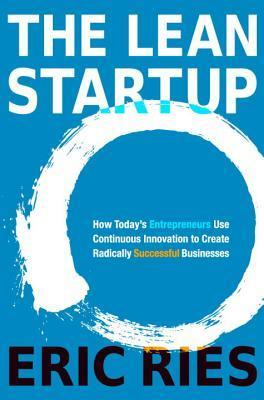More on this book
Community
Kindle Notes & Highlights
by
Eric Ries
The goal of a startup is to figure out the right thing to build—the thing customers want and will pay for—as quickly as possible.
Even the smallest startup faces the challenge of supporting existing customers while trying to innovate.
A startup is a human institution designed to create a new product or service under conditions of extreme uncertainty.
Lean thinking defines value as providing benefit to the customer; anything else is waste.
The irony is that it is often easier to raise money or acquire other resources when you have zero revenue, zero customers, and zero traction than when you have a small amount. Zero invites imagination, but small numbers invite questions about whether large numbers will ever materialize.
if you cannot fail, you cannot learn.
1. Do consumers recognize that they have the problem you are trying to solve? 2. If there was a solution, would they buy it? 3. Would they buy it from us? 4. Can we build a solution for that problem?” The common tendency of product development is to skip straight to the fourth question and build a solution before confirming that customers have the problem.
Remember, if we’re building something that nobody wants, it doesn’t much matter if we’re doing it on time and on budget.
let’s make sure that there really are hungry customers out there eager to embrace our new technology.
When in doubt, simplify.
Instead of marketing themselves to millions, they sold themselves to one.
As you consider building your own minimum viable product, let this simple rule suffice: remove any feature, process, or effort that does not contribute directly to the learning you seek.
We need to be able to test the data by hand, in the messy real world, by talking to customers. This is the only way to be able to check if the reports contain true facts. Managers need the ability to spot check the data with real customers.
David built his first minimum viable product for just over $1,200 in about three months and launched it.
Back then I did the traditional linear product development model, releasing an amazing product (it really was) after 12 months of development, only to find that no one would buy it. This time I produced four versions in twelve weeks and generated my first sale relatively soon after that.
A STARTUP’S RUNWAY IS THE NUMBER OF PIVOTS IT CAN STILL MAKE
Ask most entrepreneurs who have decided to pivot and they will tell you that they wish they had made the decision sooner.
we needed to get our product and our vision out into the market broadly in order to get feedback and to begin iteration.
If it had not launched its current product, the team never would have learned what it needed to know to pivot.
building low-quality MVPs is that developing any features beyond what early adopters require is a form of waste. However, the logic of this takes you only so far. Once you have found success with early adopters, you want to sell to mainstream customers. Mainstream customers have different requirements and are much more demanding.
Even after a company achieves initial success, it must continue to pivot.
There are four primary ways past customers drive sustainable growth:
a viral loop with a coefficient that is greater than 1.0 will grow exponentially, because each person who signs up will bring, on average, more than one other person with him or her.
If Facebook or Hotmail had started charging customers in their early days, it would have been foolish, as it would have impeded their ability to grow.
in my experience, successful startups usually focus on just one engine of growth,
the minimum viable product says that we should get a product into customers’ hands as soon as possible and that any extra work we do beyond what is required to learn from customers is waste.
When confronted with a problem, have you ever stopped and asked why five times?
Repeating “why” five times, like this, can help uncover the root problem and correct it.
1. Be tolerant of all mistakes the first time. 2. Never allow the same mistake to be made twice.
build minimum viable products for solving the same set of problems over and over again to quantify which produces the best customer conversion rates.


